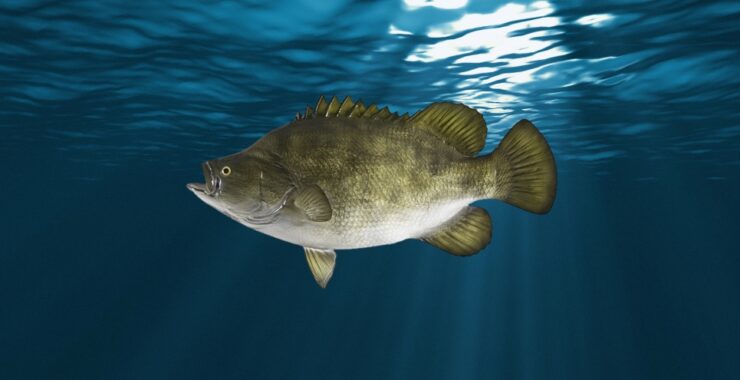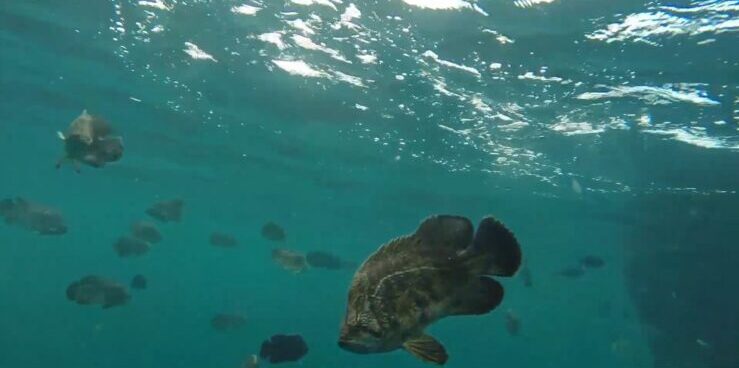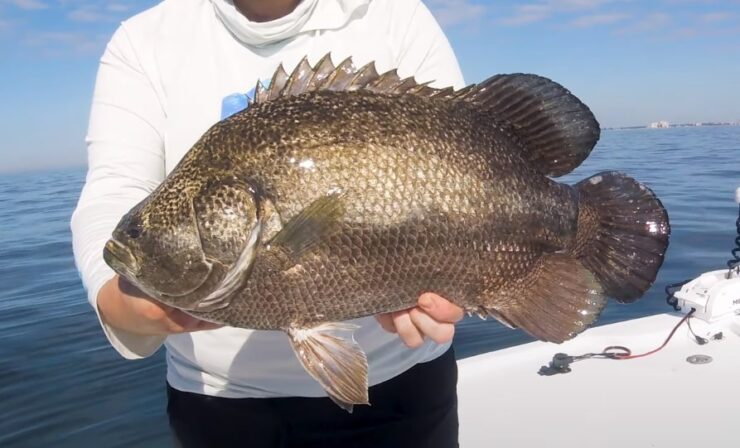When observing the waters of tropical oceans around the world, one species in particular stands out for its intriguing attributes – the tripletail fish. By their scientific name Lobotes surinamensis, these marine animals exhibit unique anatomical and behavioral characteristics that have captured the interest of researchers.
We will share more details about this species in the following sections.
Physical Characteristics

The tripletail fish has a distinct triangular body shape. Their bodies are deep and flattened from side to side. This is where their common name comes from – their dorsal, anal and tail fins form the illusion of three tails.
Coloration varies from fish to fish. Shades can range from dark brown to yellow and gray tones. This variety in color helps them camouflage into their surroundings. Younger tripletails often have a more prominent pattern, which fades as they mature.
These fish continue to grow throughout their lives. Tripletails can reach sizes up to three feet in length and weigh over 40 pounds. Despite their small eyes, their mouth is quite large. This allows them to consume different types of prey.
Their physical features serve purposes that aid survival. Varying colors and patterns provide effective camouflage. Their body shape, fins and swimming ability contribute to stealth and agility when hunting or avoiding predators.
Life in the Blue

These graceful swimmers favor subtropical and tropical grounds to call home. They find safe haven in estuaries and bays, near coasts and structures floating free. Odds are young triplets discovered tucked snug in clumps of swaying Sargassum, that kelp offering ideal shelter from harm.
Come summer’s warmth you’ll spot their full forms floating sidelong near waves above, a perfect perch to pounce on any passing prey. This strange skill makes them lethal little hunters above and below the sea. Likewise hardy, they call everything blue home from tropical Florida straight south to Argentina’s shore.
Behavior and Diet
Tripletail fish are opportunistic feeders that will consume whatever prey is available, including small fish and shrimp. They have developed a unique hunting strategy of floating on their sides near the surface, where their mottled coloring allows them to blend in with debris and ambush unsuspecting prey passing below. This camouflage helps them forage efficiently.
While often solitary, tripletail fish may also gather in small groups around floating objects that provide both food and shelter. Younger tripletails especially use algae rafts as protected areas to hunt and take cover from predators.
Reproduction and Lifecycle
During warmer seasons, tripletail fish spawn by releasing eggs and sperm into open water where fertilization occurs externally. The eggs then hatch into larvae that develop rapidly in the nutrient-rich environment.
Juveniles tend to inhabit shallow coastal areas and take refuge around manmade structures or vegetation before moving to deeper adult habitats. Understanding these lifecycle stages aids in the sustainable management of tripletail populations.
Importance to Anglers
Tripletail fish are popular targets for sport fishing due to their fighting ability and high-quality meat. Their acrobatic responses test anglers’ skills. The firm white fillets are considered a delicacy compared to other local catches. Fishermen scout areas like docks and reefs to find tripletails associated with flotsam.
Both artificial lures and live bait are used to attract these dynamic fish, which are carefully released when of legal size to protect the fishery. Conservation is key to preserving tripletail for future generations of coastal anglers.
Last Words
Thriving in tropical and subtropical waters, tripletail fish exhibit a wide range of habitat preferences, from bays and estuaries to nearshore environments. Their association with floating objects and debris, particularly for juvenile tripletails, provides insight into their adaptive behaviors and survival strategies.

